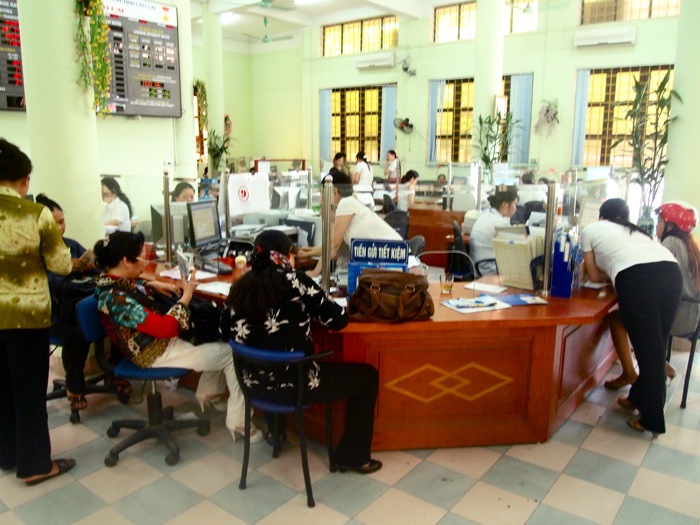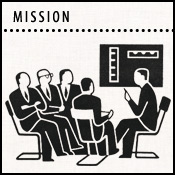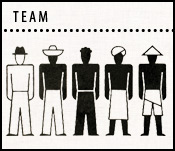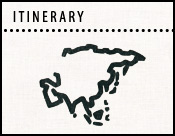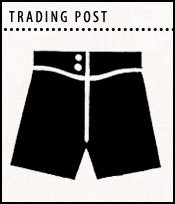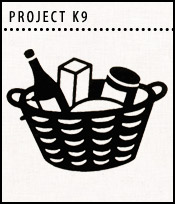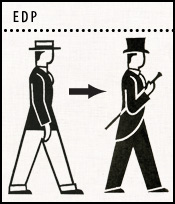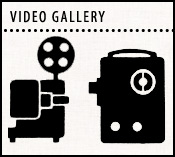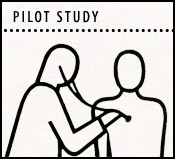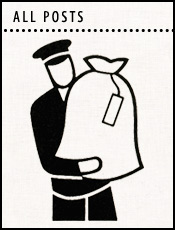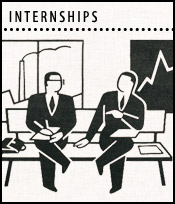July 18th, 2010
Getting Closer to Haba
Our second attempt at moving toward Haba was much more successful than the first. We woke up late and spent the day lounging around Kunming and working on logistics for our upcoming adventures in the Persian Gulf. Confirmation had just arrived that none other than the fabled and illustrious Mr. Jackson Fu was to be joining us. Along with Scott’s sister, Claudia, this was going to give us a powerful economy of scale, and introduce for the first time in AsiaWheeling’s history, a quartet of wheelers, all on Dahon Collapsible Speed Series cycles. The anticipation was dizzying.
Meanwhile nighttime grew ever nearer, and we collected our things and headed downstairs to find a cab. The driver used an alternate route this time, which circumvented much of the massive construction that had delayed us the evening before. In fact we arrived at the station in time to purchase a few waxed cardboard cups of road-side Chinese food and the materials to manufacture a round of (lukewarm) brass monkeys.
We made our way through the station and onto the train with little difficulty. The forked tongued ticket seller from the night before was nowhere to be found, perhaps better for all involved. AsiaWheeling is not a vengeful organization, after all. On board the train, our good spirits were only slightly dampened by the atypically mediocre quality of the Chinese street food. We talked through the logistics of how to get to Haba and back in time for us to catch a train to Shenzhen. You see, dear reader, we were leaving Kunming bound for Shenzhen in order to receive a tour of the very factory in which our Dahon Speed TRs were made. So attached have we become to the Speed TR, that such a pilgrimage had become an essential part of AsiaWheeling. This meant we needed to be back in Kunming by the following Monday in order to buy a ticket for Tuesday’s train. It was Thursday night. So, we thought aloud as we munched on over-salted bits of pork, clots of old rice, and tough bits of tofu. If we could get to the Haba base camp that next evening, we would be sitting pretty. This would even get us back to Kunming in enough time to spend one last night on Stew’s porch listening to trivia. All we needed to do was get to Haba’s base camp the next day. And with the train getting us into Lijiang at 7:00 am, such a task seemed perhaps not too difficult…
After a rotten night of sleep, punctuated by intermittent screaming from some child in the next compartment, the AsiaWheeling mountaineering team peeled itself from somewhat sweaty sheets and walked out the door into the misty morning and cool mountain air of Lijiang. The train was, of course, perfectly on time. Scott and I had last visited Lijiang as part of the pilot study, but the city now seemed almost unrecognizable. For instance, the entire train line that serves the city had been built in the two years since we had last been there.
Stewart quickly chose a van and haggled a price for the three of us that was less than the price that the one other person on the van was paying for just himself.
Our fellow passenger was a rich city slicker from Shanghai; the driver dropped him off at a very swanky hotel. From there, the van took us slightly down the road to a turnoff onto a somewhat crowded side-road filled with small restaurants and random shops.
On this street, we were able to find a fellow making knife-cut noodles, by slicing thin strips from a massive chunk of dough. This, it seemed, would be the perfect breakfast spot.
We sat down and ate heartily of the noodles, envisioning the upcoming day’s hike up to the base camp and all the calories that would require.
With hunger out of the way, we headed in search of rations to use over the next two days. While Stew remembered there being a large dried fruit and nut seller somewhere on this street, we ended up wandering the region for some time, finding only random tourist shops and restaurants.
In the end we purchased a few packets of Nescafe and a couple of extra giant purple Nalgene-esque bottles for Scott and me to carry water in.
We headed out into the city, walking more briskly now with the knowledge that each moment that we spent here in Lijiang searching for supplies pushed back our arrival at the base camp by that same amount. We made our way across a few busy roads and into a new section of town that proved to be slightly more helpful. Scott and I purchased long underwear at a local clothing shop, while Motta headed out to the market in search of snacks. Dried fruit, despite many inquiries, continued to elude us, but we were able to buy some cucumbers, a large sack of nuts, and a good number of bready and eggy baked goods, which promised, if not to be tasty, at least to pack plenty of calories for the upcoming uphill battle.
We thought even more highly of these stores when we added six Snickers bars, four more bags of nuts, and a package of crunchy freeze-dried durian bits to our supplies. Now we were cooking with Crisco. Scott picked up a pair of gloves as we were leaving the market, crossing off the last thing on our list. The gloves were not thick, but they were off-white, and made of cotton, perhaps meant to be extra layers or work gloves.
So it was, with these supplies crammed into our packs and hiking poles in hand, that we headed off toward the base camp of Haba Snow Mountain (哈巴雪山) as the locals call it. The first step, of course, would be to get ourselves to the city of Haba, where we would meet our guide. This city was at the end of a long winding road that ran through the Tiger Leaping Gorge. Normally anyone who does not live in the gorge is forced to pay a hefty fee upon entrance, but we had heard that since the road was currently under construction, the fee had been temporarily waived. Good for us.
What was not so good for us was the fact that when we arrived at the bus depot, we found that the entire bus route, which included Haba City, had been closed due to the construction. We were told, in fact, that the road itself was closed, and that there was no legal way to get to Haba. Feeling somewhat dejected, we sat down to contemplate our next actions. Haba, which had seemed so close, was now vanishing into the mists of what might have been. With the time constraint of the upcoming tour of Dahon’s facility in Shenzhen, we could not spare any more days to figure a work-around.
Just then, as if sensing our predicament, Stewart’s phone rang with a call from our guide. This was a guide that Stewart had worked with in the past with Where There be Dragons, and he thus came to AsiaWheeling with the highest and most ringing recommendation. He had also been calling us from time to time during our rather circuitous approach to Haba, to make sure that all was going well and that we had no further delays. Scott and I paced around the yawning and gleaming new expanse of the Lijiang Train Station, while Stew explained our situation to the guide. Stew came back over to us a few minutes later with a stern look. “Okay, guys. I think we have a plan.”
Our guide said that the road was technically closed, but he thought that between him and his friends he could get us through. All we needed to do was to take the next bus to a town called Qiaotou (桥头). This was the end of the line before the aforementioned winding road that entered the gorge. We managed to get the last three seats on the next bus (which was leaving some five minutes from then), and climbed on. It felt great. Despite all that had already occurred to keep us away from Haba, we were finally on our way. The feeling of elation, however, was short-lived, for soon we pulled up to a gigantic line of cars that were decidedly motionless, evidenced by the fact that almost all of them had deactivated their engines for some time.
We waited in the bus for a while, and as the frustrations of waiting grew more and more insistent, we ventured out on foot to explore the full extent of what we were facing.
We were on a beautiful mountain road that wove its way along the edge of a large valley, which would at one point or another connect to the beginning of Tiger Leaping Gorge.
As far as we could see, there were motionless cars lining the road and eventually disappearing into the mists ahead. We paced around outside the bus, and looked at our watches.
We could still get up to the base camp… but as time moved on, we would be faced with a greater and greater proportion of the journey being a night hike.
Finally, we decided to eat a little at a roadside café, not because we were particularly hungry, but because we were bored and frustrated. The café was positively packed with people, this likely being its best day of business since its inception. As we ate some delightfully oily and salty fried eggs and spicy broccoli, we chatted with the stranded travelers around us. During the meal, we discovered the cause of the great traffic snarl: there had been a reasonably bad accident ahead of us. The fellows we chatted with had already been waiting around for some time, and ate with the slow deliberation of those sure of no imminent departure.
With the reality of our stalled condition staring us in the face, we decided to climb back onto the bus and grab our belongings. Despite the skepticism of our fellow passengers, we headed out, in hopes of hiking along the road past the accident and to the other side, where we might catch a cab to Qiaotou. We hiked on for a few kilometers past car after bus after giant dump truck. All the drivers had turned off their engines, and many had gotten out to erect makeshift card tables and had even been playing long enough to begin to collect little piles of cigarette butts around them.
As we hiked past, we got many looks of both skepticism and solidarity from our fellow stalled travelers. After quite a few more turns, we finally came to the accident. From what we could see, it was indeed serious.
It had likely been a collision between an automobile and a motorcycle. The motorcyclist had been killed and his or her body lay in the street, covered with a bloodied white cloth. A rooster had been brought to the scene and tied to a rock securing it near the body. The rooster’s presence was presumably for some superstitious or spiritual reason.

The bird stood frozen near the body, standing on one foot and staring, moving only enough to indicate to us that it was alive. A crowd had formed on our side of the police tape, jostling each other to get a view of the carnage, while a large group of cops sauntered around the scene holding back traffic and waiting for some unknown event or person to arrive.
We tried a few times to circumnavigate the accident, trying first one route through the surrounding countryside, then another. Finally, we succeeded by scrambling up a steep grassy hill and cutting through what looked like a small fruit orchard. From atop the hill, we could see the accident in all its gory reality.
What was it about our mission to Haba that had caused the ether to manifest so many obstacles and danger in our path? A more superstitious person might begin to think that we were for some reason not meant to climb this mountain…
On the other side of the accident, we kept walking, stopping from time to time to ask gentlemen in cars if they would be willing to drive us to the city of Qiaotou. None of them were willing to bite, and after a while it began to rain. We sought shelter from the rain near a line of fruit sellers who made a point of hassling us. The rains came and went, and we paced around haggling with people about rides to Qiaotou, and finding no one who was willing to transport us for anything less than a downright predatory rate.
We therefore idled and paced, so long in fact, that the traffic began moving once again. Then, low and behold, our same bus came around the corner, and we flagged it down and climbed on. Our fellow passengers seemed happy to see us again, as was the driver. Comfortably back in our seats, we waited out the remaining half hour of driving and climbed off in Qiaotou.
The accident had cost us a fair bit of precious time. Now the sun was hanging startlingly low in the sky. As soon as we got off the bus in Qiaotou, we were met by our guide’s men, who we waiting with a small van. We climbed in and began the drive into the gorge.
I could see why the road was closed. It was not fit even for a modestly sized bus to travel. It was also actively under construction.
We drove along through a fog of rock dust, through large crowds of Chinese men and women hacking away at building a new road. From time to time, we had to stop and wait for a bulldozer or steam shovel to move out of the way for us to pass.
Finally, we came to a clearing where there was a cluster of people who were decidedly not construction workers. In fact they appeared to be tourists interested in heading farther into the gorge, but they were stopped by a large obstacle.
What was the obstacle, you ask? Well, it was something like a level from a 1980s computer game, except that it was very real.

You see, dear reader, there was a section of the road which had become more like a flattened out pile of large rocks, above which, some 50 meters over the road, there was a team of Chinese workers who had tied themselves to the side of the mountain and were hacking away at the rock face. Their work was sending a steady stream of boulders down the mountain, which would speed up and tumble, crumbling into smaller pieces on their way down, and finally flying headlong across the flattened out section one might call the road.
On the other side of this treacherous obstacle, stood our guide. He had parked his own van, and had been smoking a great number of cigarettes while waiting for us. He stood now next to his van and his pile of butts, staring at us across the hazard. He looked up at the workers, then back at us… then he made a run for it.
It worked. He made it across to our side unscathed. Once he was closer, we were able to get a better look at him. The man was wiry, dressed in army fatigues, and chain smoked cigarettes like few people I have seen outside of Indonesia. He greeted Stewart and then us warmly. He then looked back at the terrible trickling landslide. This was going to be tough…
Our guide stared up at the workers, and we watched the rocks falling. If we were hit by one of those, it would probably break our legs, if not toss us head over heels into the gorge. We looked at the guide, then at Stewart. Our guide squinted harder, looking at the motions of the distant workers, and timing the falling of the rocks. Then suddenly, he screamed “GO!” and we scrambled across. I was not sure which to spend more time looking at: my feet (so I didn’t trip and fall into the gorge) or the slope above me (so I could dodge a giant falling boulder).
Thanks be to Jah, we made it across in one piece and climbed into our guide’s van.
We then began a three-hour drive through one of the most hectic construction sites I have ever seen. Everywhere, people were hacking away at stone and blowing things up with dynamite. Meanwhile, the river which had carved the immensity of the Tiger Leaping Gorge tore on to our right, barely audible above the sound of busting rock and revving diesel engines. The steep rocky cliffs that formed the sides of the gorge tore upward at inconceivable angles, sporting impossibly green vegetated nooks and totally isolated plateaus of prairie grass.
It was so beautiful that we needed to climb out of the car and take in the view. Unfortunately, we were not prepared for the intensity of the wind that whipped through the gorge, carrying with it a peppering of rock dust and small pebbles. It pulled Stew’s Iowa Hawkeyes hat off his head and sent it spiraling into the gorge. It was all we and our guide could do to keep the man from risking his life scrambling down the steep and loose gravel after it.
When we finally got to the city of Haba, some two and a half hours later; it was well after dark. At the advice of our guide, we decided to stay the night there rather than attempt to climb up to the base camp in the night. So we stayed at a Naxi guesthouse that Stewart had used in the past during his work with Where There Be Dragons.
The owners of the guesthouse greeted us warmly and served us a splendid meal of roasted yak meat, yogurt, beans, eggs, and rice. It was one of the best meals we’d had on the entire trip. And once we had finished, we sat down to drink tea and chat with them briefly about finances. Our guide was suggesting to us that we might be interested in getting a second guide. It’s not a hard climb, but two guides might be helpful. We suspected that he was looking to spread some of the wealth among his friends, but we also earnestly promised to consider it in a more private meeting later that evening. We talked briefly about the cost of guide services, but did not hammer out an exact price. We also figured out how much a night and two meals, and a packed lunch from the hotel would be: extremely cheap. Once we had a good idea of how much this whole thing was going to cost, we headed back to our room and counted our money.
And then a shock of fear hit us. We had not visited an ATM before the trip, so we were left with just what was in our pockets, and it was not much. We worked furiously to put together a budget and tallied up all our expected expenses. It looked like we were about 500 Yuan short of being able to pay for this adventure. We looked at each other across the small room as the temperature fell outside. It was going to be a cool night. Probably the coolest of all of AsiaWheeling. I pulled a blanket around me and looked back down at our projected expenditures. Where were the huge ones? Where had we made too conservative an estimate…
One thing was for sure: we would need to completely refrain from eating anything at the base camp restaurant. Getting an extra guide would be completely out of the question. What else… Motta called the guide to get an exact price. When he hung up the phone his face was stricken. It was still too much for us. We were in the middle of nowhere, without enough money to execute this mission. But how could we turn back now? Would it be better to just go for it, and ask our guide to accept an IOU… that would not be so good for the guanxi…
Once again, as if sensing our predicament, the guide called Stewart’s phone. He was calling to lower the price. “We’re friends right?†he said.
“Of course,†Stew replied.
“And we are going to do business in the future?”
Stew replied with the same.
And then it was done. He reduced the price by just enough to put us 100 Yuan under budget. We were going to do this. But now we were yet another day behind, still with the hike up the the base camp to do tomorrow. It would likely be two days before we could summit. Things were tight, financially and temporally. We still could do it, but one more set back and we might have to scrap the whole mission.
The temperature kept falling, and we put on our new warm clothes, exiting our room to climb onto the roof of the bathroom complex. We idled up there for a while, taking in the stars. When was the last time we had even seen stars, let alone stars this dramatic?
Soon the chill of the night began to get to us, and we made our way back to the room to catch a few hours of shuteye before tomorrow’s climb.
![]()





























































































